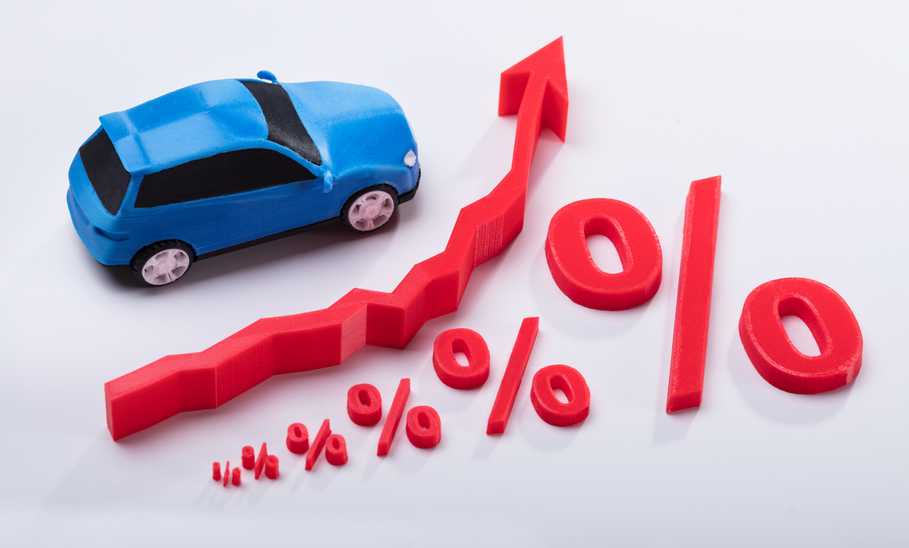Why Are Car Insurance Rates Going Up?

Our evaluations and opinions are not influenced by our advertising relationships, but we may earn a commission from our partners’ links. This content is created by TIME Stamped, under TIME’s direction and produced in accordance with TIME’s editorial guidelines and overseen by TIME’s editorial staff. Learn more about it.
According to the U.S. Bureau of Labor Statistics, average car insurance rates had already increased by almost 12% as of April 2024, compared with December 2023. That’s in only four months.
You may not need to look at economic data to know this hard truth, having already seen it reflected in your most recent insurance bill. Let’s take a deeper look at what’s going on, find out what the forecasts say, and explore what you can do about a ballooning car insurance bill.
Car insurance has become more costly because companies’ business costs have increased, and they are passing them on to customers. There are three main reasons for the situation.
We’ve all had a first-hand education over the past few years on how inflation can impact our budgets, but inflation also affects businesses. Everything—from office supplies to employee benefits to utilities—costs more. Some insurers can absorb these costs, at least for a while. Eventually, however, they’ll pass them onto customers.
Thankfully, the inflation rate has eased dramatically since hitting a high of 9.1% in June 2022, sitting at 3.5% for March 2024. Unfortunately, this doesn’t mean that prices have dropped, as companies tend to lock in higher prices to make up for missed profits.
The National Highway Transportation Safety Administration (NHTSA) estimates that 40,990 people died in traffic accidents in 2023. That’s down slightly from 2022 and 2021, but it’s higher than each of the eight years before that. Indeed, in 2013 the number of fatalities was 32,893, roughly 20% less.
The bottom line is that accidents, including those involving fatalities, are happening more frequently. As a result, insurers have more claims to settle. More claims mean more payouts to customers and those who are involved in accidents with those customers.
When insurance companies have to pay more to settle claims, you have a recipe for higher premiums. A car insurance claim settlement is affected by two primary factors: the costs related to vehicle and other property damage and the costs related to medical and other care for injuries.
The cost to repair vehicles has risen at a faster rate than the overall consumer price index, with a noticeable spike since the pandemic. Inflation has affected the cost of repair parts, while the repair industry is still feeling the effects of a labor shortage.
Then there are the cars themselves, which have gotten very expensive to buy and costly to repair. According to Kelley Blue Book, the average new car transaction price has risen by 21% since April 2021. Modern cars are stuffed to the gills with expensive electronics and other materials. A decade ago repairing a dented bumper might have involved just a few hundred dollars worth of paint and labor. With today’s cars such a repair might involve the replacement of thousands of dollars of sensitive electronics.
Medical costs are also rising. PricewaterhouseCoopers projects medical costs to rise by 7.0% in 2024, so insurers are paying ever more to settle injury claims.
The added costs of inflation, more claims and higher settlements weigh on insurance companies' balance sheets. To remain competitive, they have little choice but to increase their car insurance rates.
Car insurance pricing is historically cyclical and based on market conditions. Every few years we see average rates decrease, then increase, then decrease again, and so on. Chances are we’ll see rates come down eventually, but it may not happen this year. Insurify, an online insurance marketplace, forecasts that, while the market will stabilize a bit in 2024, rates will still increase by about 7%. Nevertheless, that’s a significant improvement from the 24% rise in 2023.
Seeing your car insurance bill go up again and again can leave you with a helpless feeling. However, there are things you can do to exert control over what you pay.
A January 2024 study by U.S. News & World Report shows a difference of just over $2,000 between the most and least expensive average annual rates of 11 leading insurers. This underscores the importance of shopping around. Check with at least four or five companies and have your current policy’s declarations page handy, so you can make a direct comparison.
Most insurers offer a wide range of ways to save that include discounts for bundling policies, insuring multiple cars, choosing a “paperless” policy, or paying your annual premium in full rather than through monthly installments. Call your insurer and ask to discuss your policy with an eye toward helping you find ways to save with discounts.
A growing number of insurance companies offer optional usage-based insurance (UBI) programs. These include Progressive’s Snapshot, Allstate’s Drivewise, and State Farm’s Drive Safe and Save.
The concept is simple. You agree to transmit your driving data to your insurer, usually through your phone or a device that plugs into your car. If it proves that you have safe driving habits, you could earn a policy discount.
Even if you don’t want to try UBI, safe driving habits can pay off in the long run. Avoiding violations and claims keeps your insurance costs down. Remember to keep to a reasonable speed, avoid the phone and other distractions, and drive defensively.
Collision and comprehensive coverages aren’t required by law, though they may be required by your lender if you have a loan or lease. They can help you pay to repair or replace your car if it’s damaged in an accident for which you’re at fault, or by something like a tree falling on it.
These coverages usually make the most sense for newer vehicles with a lot of value. According to the latest S& P Mobility report, cars and light trucks in the U.S. rose to an average age of 12.6 years, a new record. If you drive an older vehicle whose value has dropped to the point at which the cost of the coverage and deductible is more than you could hope to get for a total loss claim, you might consider dropping these coverages from your policy. An agent can help you decide if this is the right move for you.
A final tip: If you financed your car, your lender probably required you to purchase gap coverage. This coverage ensures that a total loss claim payout would be enough to cover the balance of the loan or lease. Once you own a vehicle outright, however, you can drop this coverage from your policy.
Independent agents are licensed professionals who are dedicated to helping customers reduce their financial risk with insurance. They can also be your ally for saving money. This is because they:
Car insurance rates increased 24% on average in 2023 and are projected to rise another 7% in 2024. These increases are largely the result of increased costs for insurers: As they pay more to settle claims, they pass on the costs to customers. The good news is that there are some things you can do to save money. Try shopping around for coverage, asking your insurer about discounts, investigating if you can reduce some coverages, and talking to an independent insurance agent.
The car insurance industry has seen broad rate increases recently due to inflation and higher claims costs. However, your behavior could also be a factor. If you recently filed a claim, got into an accident, or received a violation, you can expect your premium to go up.
There are several contributing factors. These include the effect of inflation on running a business, an increase in the number of claims, and an increase in the cost to settle claims.
Car insurance is legally mandated in almost every U.S. state, so finding an affordable policy is a problem facing most car owners. The U.S. News & World Report study noted above put the average annual cost of car insurance at $1,547 per year. USAA had the least expensive policy, at $1,022. Ranking second was GEICO, at $1,250, with State Farm coming in third at $1,279. The most costly “cheap” policy was Allstate’s, at $2,135.
However, those are the cheapest rates for each company. In terms of overall average annual rates per company, USAA and Travelers came in first at $1,355, Nationwide was second at $1,621, and GEICO was third at $1,778. The highest again belonged to Allstate, at $3,374.
Car insurance costs also vary considerably by state. The same study pegged Maine as having the cheapest average annual rate: $949. Idaho was second, at $992, and Vermont third, at $1,053. The most expensive state for car insurance was Louisiana, at $2,734.
The information presented here is created by TIME Stamped and overseen by TIME editorial staff. To learn more, see our About Us page.



